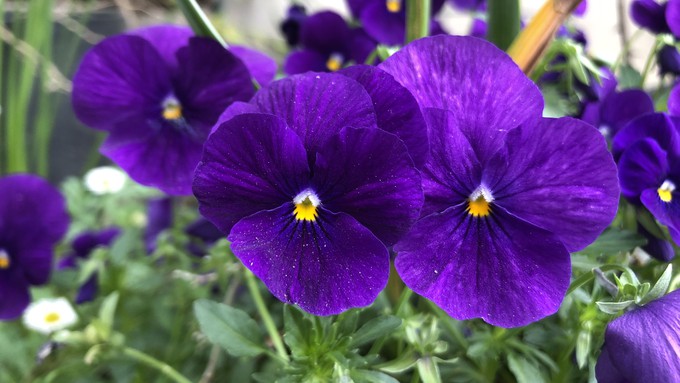
Change is in the air; rain due on Thursday

Pansies planted now will add color to the garden all winter. Kathy Morrison
Hope you enjoyed our sunny and warm Thanksgiving weekend! Our weather is about to change.
After a relatively dry November, December will start with a splash, says the National Weather Service. On Thursday and Friday, Sacramento can expect rain and gusty winds.
As of the early forecast, it won’t be a lot – about ¼ to ½ inch total over two days. But the Sierra passes could see heavy snow, laying a foundation for a good winter snowpack (fingers crossed).
After several afternoons in the high 60s, Sacramento will be back to normal for late November by Sunday – 63 degrees. With the impending storm, temperatures will cool down with highs in the low 50s and overnight lows in the mid to low 30s. Frost warnings are expected for Tuesday and Wednesday.
Before the rain comes, take advantage of sunny, calm days:
* This may be your last chance this season for the first application of copper fungicide spray to peach and nectarine trees. Leaf curl, which shows up in the spring, is caused by a fungus that winters as spores on the limbs and around the tree in fallen leaves. Sprays are most effective now, but they need a few days of dry weather after application to really “stick.” If you haven’t yet, spray now.
* Rake and compost leaves, but dispose of any diseased plant material. For example, if peach and nectarine trees showed signs of leaf curl this year, clean up under trees and dispose of those leaves instead of composting.
* Make sure storm drains are clear of any debris.
* Give your azaleas, gardenias and camellias a boost with chelated iron.
* Trim chrysanthemums to 6 to 8 inches above the ground after they’re done blooming. Keep potted mums in their containers until next spring. Then, they can be planted in the ground, if desired, or repotted.
* Prune non-flowering trees and shrubs while dormant.
* Plant bulbs for spring bloom. Don’t forget the tulips chilling in the refrigerator. Other suggestions: daffodils, crocuses, hyacinths, anemones and scillas.
* Seed wildflowers including California poppies.
* Also from seed, plant sweet pea, sweet alyssum, bachelor buttons and other spring flowers.
* Plant most trees and shrubs. This gives them plenty of time for root development before spring growth. They also benefit from winter rains.
* Set out cool-weather annuals such as pansies and snapdragons.
* Lettuce, cabbage, broccoli and cool-season greens can be planted now.
* Plant garlic and onions.
* If you decide to use a living Christmas tree this year, keep it outside in a sunny location until Christmas week. This reduces stress on the young tree.
Comments
0 comments have been posted.Sacramento Digs Gardening to your inbox.
Sites We Like
Garden Checklist for week of July 21
Your garden needs you!
* Keep your vegetable garden watered, mulched and weeded. Water before 8 a.m. to reduce the chance of fungal infection and to conserve moisture.
* Feed vegetable plants bone meal, rock phosphate or other fertilizers high in phosphate to stimulate more blooms and fruiting. (But wait until daily high temperatures drop out of the 100s.)
* Don’t let tomatoes wilt or dry out completely. Give tomatoes a deep watering two to three times a week.
* Harvest vegetables promptly to encourage plants to produce more. Squash especially tends to grow rapidly in hot weather. Keep an eye on zucchini.
* Pinch back chrysanthemums for bushy plants and more flowers in September.
* Remove spent flowers from roses, daylilies and other bloomers as they finish flowering.
* Pinch off blooms from basil so the plant will grow more leaves.
* Cut back lavender after flowering to promote a second bloom.
* It's not too late to add a splash of color. Plant petunias, snapdragons, zinnias and marigolds.
* From seed, plant corn, pumpkins, radishes, winter squash and sunflowers.